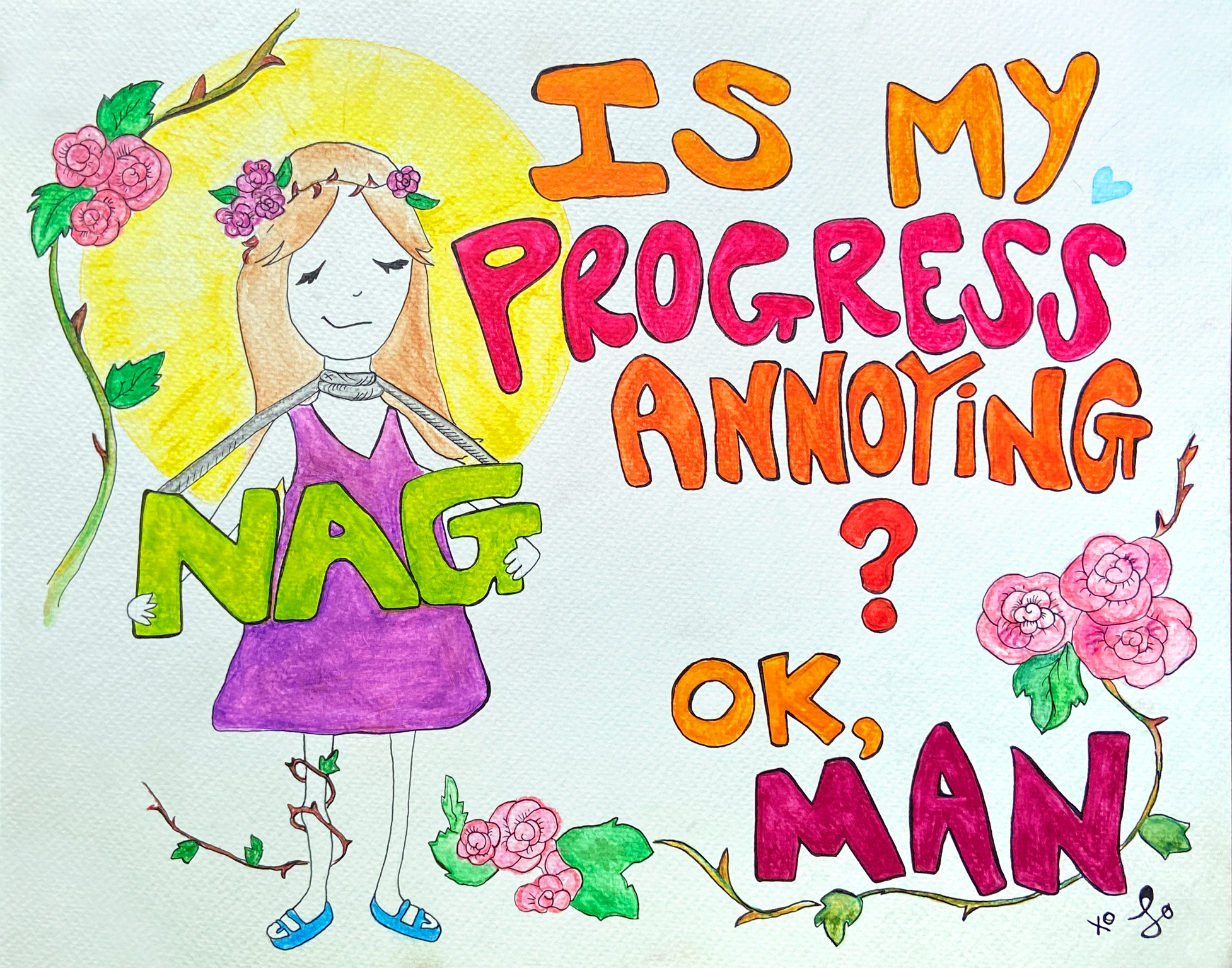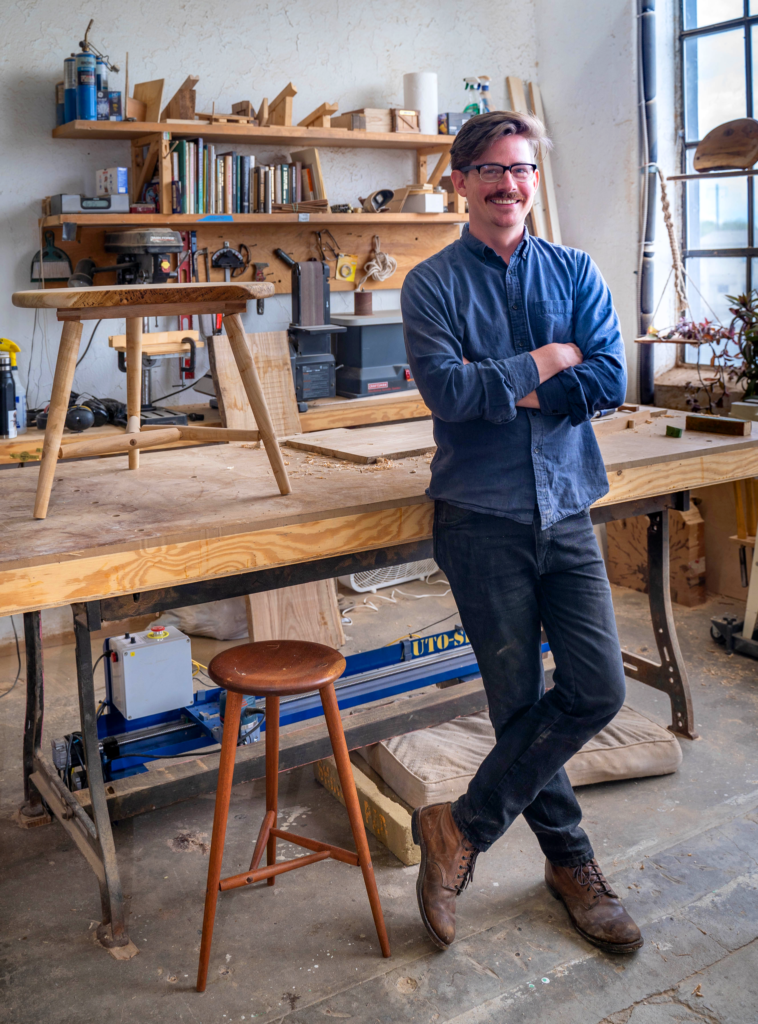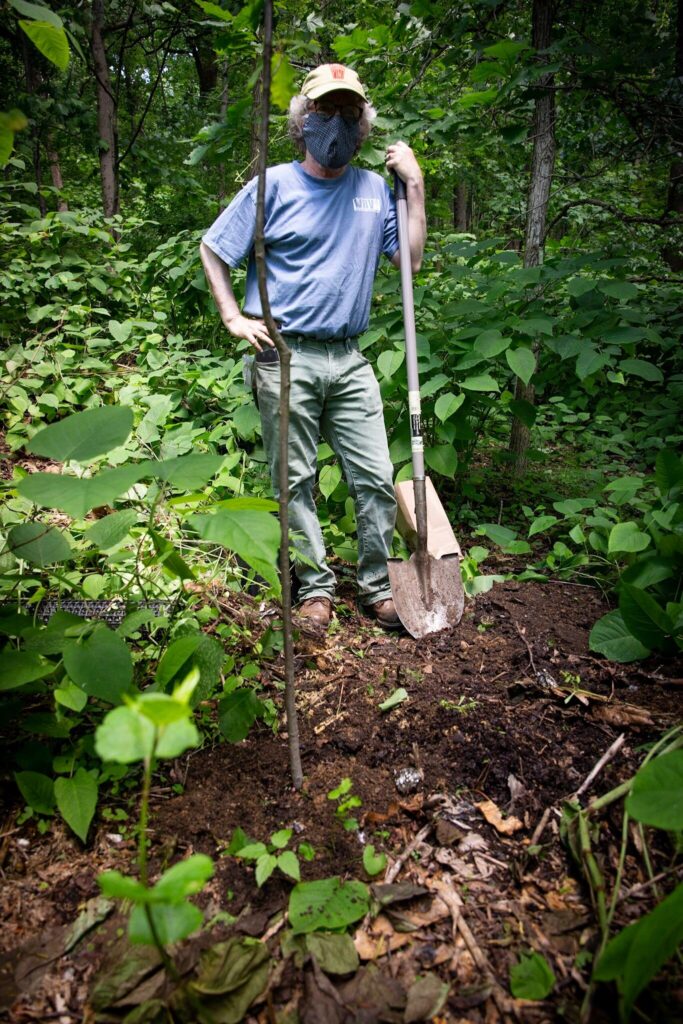Photography By Milton Lindsay
Rich and Creamy
By Alexandra W. Jones
Vegan cheesemonger Steve Babaki knows the secret to making plant-based cheese taste like the real thing.
Time.
“If you just give it the time, it can taste so similar,” he says.
The Conscious Cultures Creamery owner describes himself as 99.9% vegan (he occasionally nibbles at dairy cheese to research flavor profiles) and says he’s had a lifelong relationship with the kitchen. He was raised by his grandmother in Washington, D.C., and grew up cooking with her.
After she passed away, when he was 13 years old, he moved in with his brother, who was 15 years older and hard at work in nursing school at the time.
“From there on, I actually prepared most of my own meals,” he says. “I got really, really used to being in the kitchen all the time and I loved it, so of course that took me into restaurants.”
He spent about 20 years in the industry, Babaki says. His first job that required a social security card was with a bagel bakery. He worked at several well-known restaurants in California before arriving in Philadelphia in 2017 and snagging a job at Center City’s high-end vegan restaurant Vedge.
While working as a front-of-house employee there, Babaki started making vegan cheese as a fun experiment for his partner Becky, who he said was a “borderline vegan” at that point.
“I would bring stuff into my job and people would try it and would say how good it was,” he says, “and Becky loved it too,” so last March he decided to do a small pop-up shop at a yoga studio in his Chestnut Hill neighborhood to gauge public interest. The first cheese he started making to sell he called The Bloomy White, a blooming rind cheese comparable to camembert and brie.
It went well, and the event led him to meeting Carmella Lanni and Carlo Giardina, owners of Philly’s vegan convenience store V Marks the Shop. Lanni reached out to offer their vegan store as a location for future pop-ups. Less than a week later, she says he had his cheese spread out for them to taste alongside a batch of homemade fennel jam and a shiitake mushroom-Beyond Meat pâté.
“The way that he presents food is very much in line with the presentation in a restaurant,” Lanni says, noting this tendency is likely a result of his work experience. She and Giardina collaborated with him during the summer of 2019, allowing Babaki to host pop-ups in the back room of their store. He started to gain some traction with these events—but what really put his business on the map was an article by Craig LaBan, who has served as The Philadelphia Inquirer’s food critic for 22 years, wrote about him that August, titled “The best vegan cheese Craig LaBan has ever tasted.”
Once that article was published, V could not keep his cheese in stock, Giardina says.
“People literally were coming here with the newspaper clipping that they cut out to show me. ‘This is the cheese, right?’ ” Giardina recalls, saying LaBan’s readers were calling him and Lanni at night to ask if they had any for sale and beating down the door of Vedge, trying to track down Babaki.
The texture, the look and the complexity of flavors is what made Babaki’s cheese stand out, according to LaBan, who says Jonny Medlinsky, co-owner of the Kensington restaurant Martha, first brought the cheese to his attention.
“All the vegan cheeses that I’ve had before—and I will not say it’s a huge amount—they didn’t look particularly appetizing or like a handmade product,” LaBan says. “They either looked very industrial or they looked like a lump of Playdoh, and this looked like it was like a triple-cream brie. It had the look, the feel and even the smell of a bloomy rind.”
To make a wheel of The Bloomy White, which Babaki has since renamed Maverick, takes about three weeks from start to finish, Babaki says.
He describes a little of the magic. It begins with cashews that are soaked in water for eight hours before being drained and blended with coconut milk, which Babaki says gives the cheese “a deeper, more fatty richness.” Once it’s blended, he adds traditional cheese-making bacteria cultures. That’s what gives the cashews and coconut the traditional cheese flavor, he says.
“I add that into the base and I let them ferment at room temperature, covered in a muslin cloth,” Babaki explains, “so that it can still breathe and so that excess moisture will evaporate.”
During that process, the curd thickens up. Once the pH drops, he puts it in the refrigerator “to stop that hard fermentation that happened at room temperature, and also to get the curd to firm up a little bit more,” he says. That way it’s easier to manipulate into any shape he wants.
Then he uses a 6-ounce scoop, which he says looks similar to an ice cream scooper, and plops the globs of future cheese onto pieces of plastic mesh. From there, he puts them into household refrigerators that he’s converted into “caves.”
“It’s what I call them because I have them hooked up to a gadget that regulates the temperature, so if the temperature begins to get too cold, the refrigerator stalls, and if it gets too warm, the refrigerator comes back on,” he explains. Adding to Babaki’s cave analogy, he also puts rocks in the fridges—an idea borrowed from Fishtown cheesemaker Yoav Perry, who Babaki calls a “cheese whisperer”—to hold moisture and keep humidity high in the vessels. Each cave can hold around 100 pounds of cheese.
Over the course of three weeks, “the cheese gets flipped daily,” Babaki says, “when the mold starts to grow.”
“You actually have to kind of pat it down a little bit and try and, like, make it grow evenly,” he explains, and after they’ve done their time, the cheeses get pulled out and wrapped up and refrigerated normally.
Lately, Babaki’s also focused his efforts on making mozzarella-style cheese balls and vegan cream cheese products that he can turn around in few days. He’s looking forward to expanding his business and hiring employees to help him along with his venture after he finishes moving his operation into BOK, a South Philly operation that leases space to small-business owners.
Once he gets a large walk-in cooler, he’ll be able to make significantly more cheese, Babaki says, and experiment with other varieties, like Gouda, which can require up to 12 months to develop the right flavors and textures.
“I’m just looking forward to making as much cheese as possible for all the people that want it,” he says. “My hope is that this cheese makes a lot of people happy.”











Hello seened you on 6 abc news your product looks delicious would love to visit but not sure where you located I do live in philly
Can this be shipped to my house ?